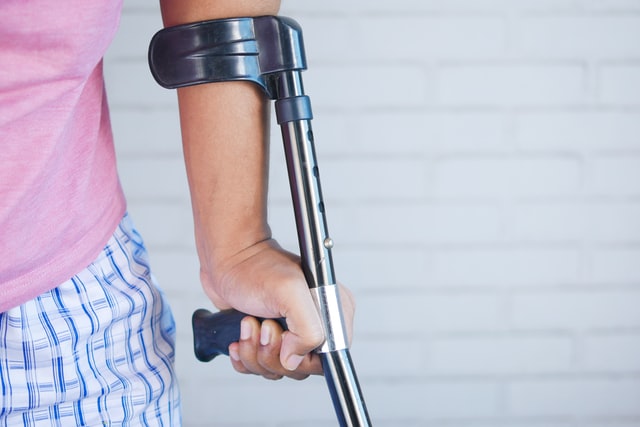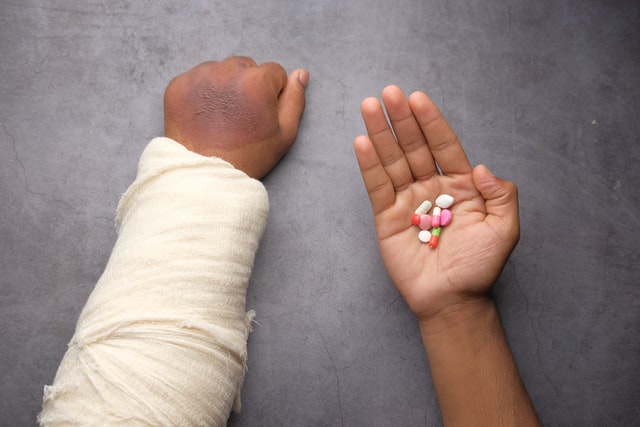Muscle injuries are more common in everyday life than we would like. It makes no difference whether you are an elite athlete or avoid the gym at all costs. An injury can happen at any time, whether it’s due to a fortuitous blow, a muscle tear while training, or a sudden movement while cleaning the house.
Regardless of the cause, the treatment for a minor muscle injury is almost always the same. That is why we want to provide you with a complete guide so you know exactly what to do if you sustain a muscle injury.
This way, you’ll be ready and have the tools you need to treat the injury and get it healed as soon as possible, reducing pain and making the painful experience bearable. So, let’s get right to it!

How do I know if I have an Injury?
A muscle strain occurs when a muscle or tendon is stretched and tears. Injury-prone areas include the neck, shoulders, and lower back. If we are athletes or engage in constant physical activity, the area of the legs is usually exposed.
If you have severe pain in the affected muscle when you try to use it or when you are at rest, you have a tear. Swelling or bruising in the area also indicates that you have sustained an injury and should seek treatment.
What Causes it?
Lifting an object that is too heavy can result in a muscle injury. One of the most common causes is the overuse of a specific muscle.
You must be careful if you are an athlete and you accumulate injuries. Melbourne-based myotherapists explain that great care is needed to manage myofascial pain and injury to ensure a safe recovery. Myofascial pain syndrome occurs when a muscle is repeatedly contracted and can cause pain in areas of the body that appear to be unrelated to the injury.
That is why it is essential to treat any injury to the muscles and not give it minor importance. Remember that they can occur at any time, even as a result of poor posture or failing to stretch the muscles before engaging in any physical activity.
After Suffering an Injury
Following the acute pain of an injury, you will most likely experience swelling in the affected area and will be unable to use that part of your body. It is critical to act quickly because this will aid in the healing of the injury. The first few hours of treatment will have a significant impact on your subsequent recovery.
RICE is a common acronym used by athletes and therapists to treat muscle injuries.
Rest
One of the most important aspects of treating any muscle injury. This does not imply that you will remain motionless as a mummy with no physical activity. Because muscle atrophy can also be harmful to your recovery. However, try not to force the muscle and instead give it the necessary rest.
Ice
Cold therapy alleviates pain in the affected area. It is advised to apply an ice ball every 15 minutes. For the first three days, repeat this technique every two hours. The cold slows down pain receptors, reduces blood flow through blood vessels, and improves the function of your lymphatic system.
Compress
The compression technique works in combination with the cold technique. When applying the ice pack, use caution and avoid using too much force. It must be firmly placed while not interfering with the flow of blood through the blood vessels. Every 15 minutes or whenever your skin tingles, remove the ice pack.
Elevate
Keep the injury away from your heart. You can help yourself by using a couple of pillows, and if you can’t elevate the affected area above your heart, keep it as close to it as possible. If your injury is in your butt cheeks or back, lie down on your stomach and stack pillows on your lower abdomen so that the affected area is above the level of your heart.
48 to 72 hours After Injury
Throughout this time, it is critical that you follow the RICE method methodically and without skipping any hours. It is crucial that you avoid using any heat techniques for the first few days, as this will increase blood flow and worsen the swelling of your injury.
Medicines
Pain relievers can help if you’re in a lot of pain. Ibuprofen or any anti-inflammatory medication can be purchased at your local pharmacy. You can also use creams to relieve the pain and swelling caused by the injury.
Immobilization
A splint that allows complete immobilization is required for the complete healing of the damaged muscle. Continuing to use the damaged part will only prolong and complicate your recovery.
A Week Later
The first 72 hours after a muscle injury are critical. The affected area begins to heal on the third day, and you will be able to tell by how the color of the bruises changes or how the swelling decreases.
Depending on how your injury progresses, you can remove the splint or begin physical rehabilitation at the end of the first week. It’s also a good time to use heat techniques on the wound, in addition to the ice packs you’ve been using since the beginning.
Heat Treatment
Heating pads can be used every two or three hours. Always apply them with a cloth or over clothing rather than directly to the skin.
Physiotherapy
Long-term injuries can benefit greatly from physiotherapy. Massage, stretching, and muscle-strengthening techniques will aid in the restoration of the normal use of the affected area. Returning to normal physical activity will be less traumatic as a result, and any relapse will be avoided.
When to go to the Doctor
If you believe your injury is more serious than usual, you should go to a health center right away.
If you are in severe pain or heard a crack at the time of the injury, you should see a specialist immediately.
Another indication that you should see a doctor urgently is the presence of a fever, dizziness, joint instability, or the inability to use or move the affected area
Remember that any muscle injury, no matter how minor it appears, must be treated as soon as possible. For the first three days, use the RICE method and immobilize the affected area to promote faster healing.

If the pain persists, do not be afraid to take anti-inflammatory medication, and if you suspect that your injury is more serious, go to a health center and see a specialist. Remember that your health is the most important thing in your life.
Recent Posts
The Role of Senior Living Placement Services in Enhancing Quality of Life for Seniors
How can seniors find the best place to live as they get older? Choosing the right place is important for their health and happiness - senior living placement services help by finding the perfect...
Understanding the Concept of a Gift from God: A Spiritual Exploration
When we think about gifts, we often picture tangible items wrapped nicely in colorful paper. But a gift from God is different. It isn't something you can hold or touch. Instead, it's something...
